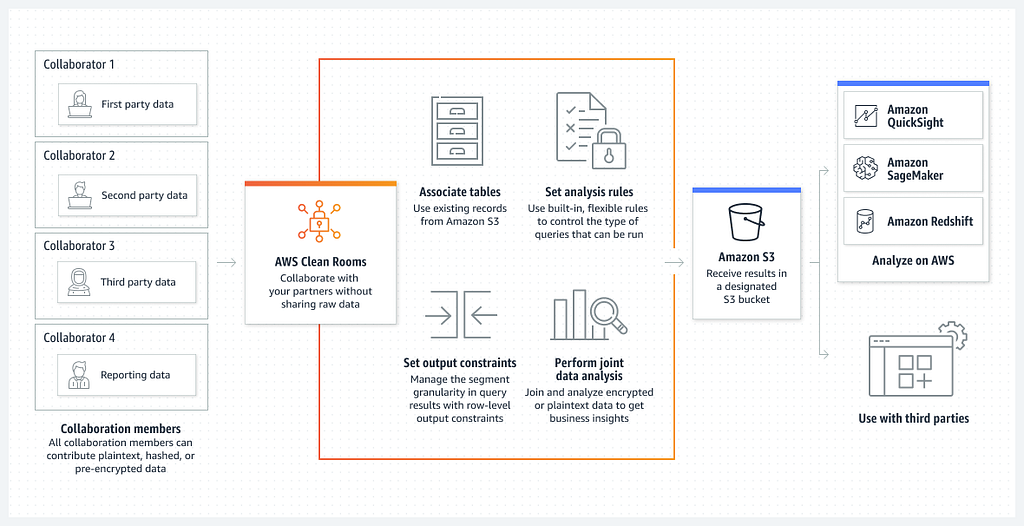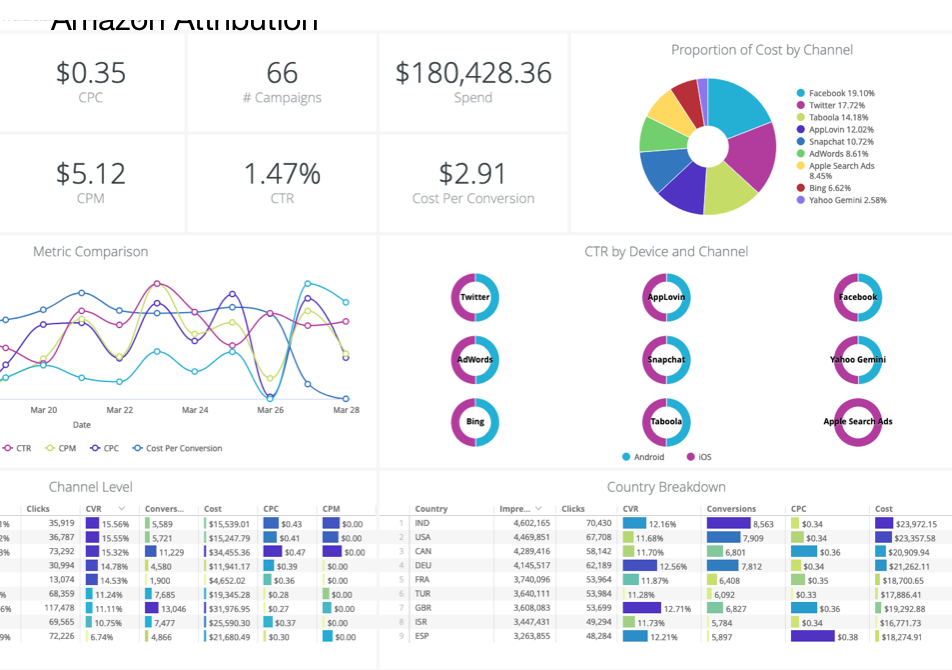
Enhancing Data Privacy & Collaboration With A Private, Trusted Amazon Marketing Cloud Clean Room
The term “Data Clean Rooms (DCRs)” is often used in conjunction with descriptions of Amazon Marketing Cloud. But what, exactly, is a DCR? A DCR provides a protected setting where various organizations or sections of a single organization can collectively analyze data while adhering to specific rules and limitations to ensure data security.
AMC Clean Room and Cloud DSP
Amazon offers what they describe as an “Amazon Marketing Cloud Clean Room” to house the data and an interface to issue SQL queries. However, a DCR is not limited to the Amazon Ads AMC.
Did you realize platforms like Snowflake, Google BigQuery, Databricks, and others can also operate as an Amazon DCR? They can! This means there are two types of clean rooms available;
- Amazon Ads developed and managed AMC Clean Room
- Cloud Platform Clean Room (Snowflake, Google BigQuery, Databricks, AWS Clean Rooms, and many others)
We will go into the variations on each below.
Amazon Marketing Cloud “Clean Room”
AMC’s integration with Cloud DSP (Demand-Side Platform) is built and managed by the Amazon Ads team, on top of AWS infrastructure.
The Amazon Ads AMC DCR environment allows advertisers to combine and analyze their data with aggregated, anonymized Amazon data without compromising user privacy. The clean room concept is particularly relevant in an era where data privacy concerns are paramount. It provides a secure space where advertisers can glean insights from vast datasets while adhering to stringent data privacy standards.
This powerful tool enables advertisers to buy display, video, and audio ads programmatically. Integrating Cloud DSP within AMC offers a seamless experience for managing advertising campaigns across Amazon’s ecosystem and beyond. Teams can unify sales and marketing data from sources like Amazon Selling Partner, Amazon Advertising, Google Ads, Facebook Marketing, Shopify, and many others to private DCRs in data lakes or cloud warehouses.
This feature is particularly beneficial for businesses looking to enhance their reach and impact across various platforms while maintaining control and visibility over their campaigns.
Private, Trusted, Owned Cloud Data Warehouse Platform Clean Room
Unlike the Amazon Ads AMC Clean Room, platform-based DCRs do not have Amazon DSP requirements. You have full control and flexibility to define what resides in your DCR and how it should be used.

Using platforms like Snowflake, Google BigQuery, Azure, AWS, and Databricks, these types of solutions offer substantial benefits for data-clean rooms (DCR) and non-DCR use cases.
In DCR scenarios, these tools ensure data security and privacy, a critical aspect of compliance with regulations like GDPR and CCPA. They enable secure data sharing and collaboration within an organization and with external partners without exposing sensitive raw data.
This is particularly beneficial for projects that require joint data insights while maintaining strict data privacy.

For non-DCR use cases, these platforms offer a unified data environment that is highly scalable and efficient. They can handle large volumes of data, making them ideal for advanced analytics and machine learning tasks across various business functions.

Their flexibility in integrating with diverse data sources and formats makes them versatile tools for various data management needs. Comprehensive data governance ensures accuracy and consistency, enhancing overall data quality and supporting responsible data usage across different business applications.
Industry Standard, Robust Ecosystems
The robust ecosystem surrounding data warehouse solutions like Snowflake, Google BigQuery, Azure, AWS, and Databricks significantly enhances their utility.
They are natively supported by a wide range of data visualization, machine learning, reporting, query, and business intelligence (BI) tools, enabling comprehensive data analysis and insight generation. Get the data you need to fuel your favorite reporting, data visualization, SQL, or data science tools like Tableau, Microsoft Power BI, Looker, Amazon Quicksight, SAP, SAS, and others.
These integrations with advanced analytics and machine learning tools allow businesses to derive deeper insights from their data, facilitating data-driven decision-making.
The compatibility with various data visualization and BI tools makes it easier for businesses to interpret complex data sets and effectively communicate findings across the organization.
This ecosystem streamlines the data analysis and empowers businesses to leverage their data clean room environment for strategic advantage, optimizing operations and enhancing customer experiences.
Take the next step — for free
Want to activate BigQuery, Snowflake, Databricks, Amazon Athena, and Azure Data Lake clean rooms? You can create clean rooms in minutes and quickly analyze datasets with your partners.
Openbridge offers code-free, fully automated data pipelines to a private, trusted cloud warehouse or data lake clean room. With your data unified, you can use your favorite analytic tools like Power BI, Looker, Tableau, and others for internal teams or external partners.
By providing advertisers with automated, direct first-party data, Openbridge accelerates the speed at which your team's team can collaborate, share, and gain valuable insights that deliver data-driven growth and profit.
Get a 30-day free trial of the code-free Openbridge data integration for Amazon Advertising, Amazon Selling Partner, and Amazon Vendor Central.
Building An Amazon Marketing Cloud Clean Room was originally published in Openbridge on Medium, where people are continuing the conversation by highlighting and responding to this story.
from Openbridge - Medium https://ift.tt/hicvgST
via IFTTT






